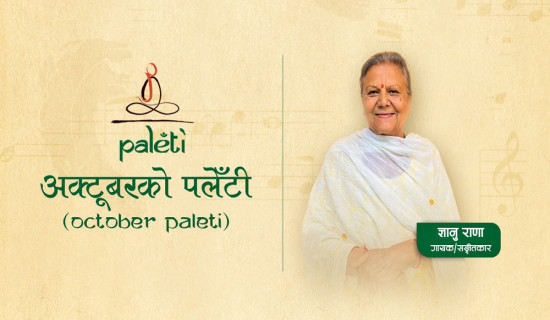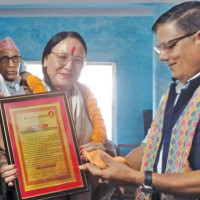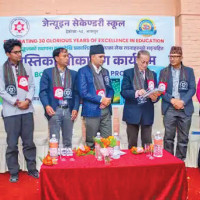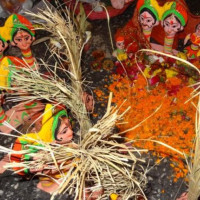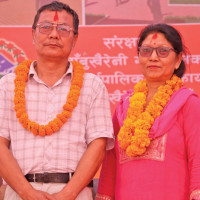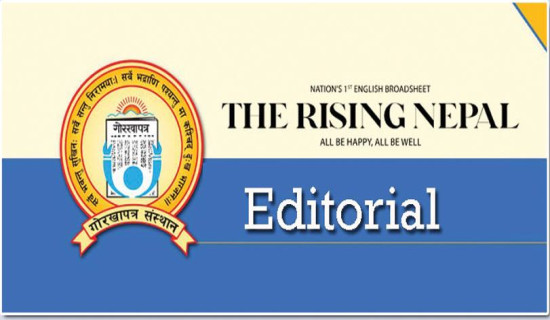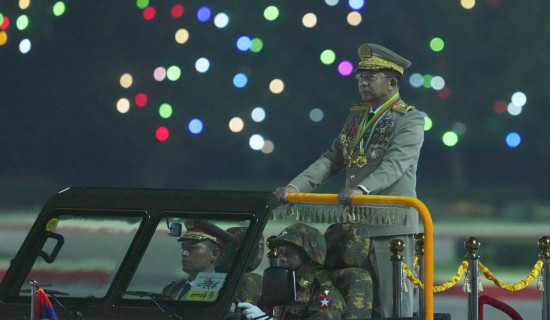- Thursday, 30 October 2025
In Quest Of Identity And Love
“Poetry, first and foremost, is a conversation with myself,” says Kalpana Singh-Chitnis, an Indian-American poet, writer, filmmaker, and author of six poetry collections. “It is a contemplation and a conversation with the universe.” Her work has appeared in numerous journals, including Columbia Journal, Silk Routes at the University of Iowa, and Stanford University's Life in Quarantine. She has also been referenced in The New York Times and The Huffington Post and featured in The Telegraph, Los Angeles Times, and Daily Pilot. Additionally, she has made appearances on platforms like ABC Channel, Voice of America, Fox News, and India's national TV network. Singh writes in both Hindi and English, and her bilingual poetry collection Love Letters to Ukraine from Uyava was honoured as a finalist in the 2023 International Book Awards. She has received numerous awards and nominations, including recognition as a finalist for the National Indie Excellence Awards and a nomination for the prestigious Pushcart Prize. Her accolades include the 2017 Nazi Naaman Literary Prize for Creativity, among others.
Her poetry often draws from eclectic sources, reflecting her origins and her current life in the United States. Originally from India, Singh-Chitnis has lived in the U.S. for over two decades, and her poems resonate with themes of identity, experience, and agency.
Her most recent collection, Trespassing My Ancestor’s Lands, is divided into three parts. The first part focuses on her ancestral homeland, India, and muses on the connection between two worlds—the U.S. and India—which are both meaningful in her life. The second part, Blood and Water, includes poems advocating for love and peace, some of which are drawn from her earlier collection, Love Letters to Ukraine from Uyava. This collection, dedicated to promoting love and peace and condemning the war in Ukraine, speaks to the loss of humanity in conflict.
The third section of Trespassing My Ancestor’s Lens, titled The Dance of the Century, examines miscellaneous subjects.
Through poetry, she explores themes such as language, culture, religion, women’s agency, and the land itself. For example, in the poem “America Held My Hand,” she reflects on identity and the deep connection between language and homeland. The title poem, Trespassing My Ancestor’s Land, explores the concept of borders—once nonexistent—arguing that they are mere illusions and calling for peace, reminding readers of our shared human origins.
In the collection, the poet invokes religious texts, blending ideas from the Quran, Judaism, Christianity, and Hinduism. In The Indus, she praises the Indian civilisation, writing:
She thrust the mighty Himalayas to the height of the sky,
Tinted her forests green, painted flowers and fruits on the scene.
She sculpted oceans, carved the reservoirs of sweet water,
And set free her rivers, serene.
Her poetry’s beauty lies in its simplicity, lucidity, and use of metaphors, making it accessible while still deeply rooted in cultural and spiritual context. The poet honours the significance of the Himalayas, speaking of them as a timeless symbol of strength and divinity. Through poems like The Abode of Gods, she connects the natural world with spiritual themes, celebrating the sacredness of the earth and the divine presence in nature.
Gender and women’s agency are recurring themes in her work, especially in poems like The Salt of a Woman, which addresses the long history of women’s suffering and resilience. The poet critiques the patriarchal society and celebrates women’s agency, often drawing parallels between women and nature. Her poems encourage empowerment and resistance against tyranny.
While some lines may appear ambiguous, the overall beauty and meaning of her poetry remain clear. Much of her work in the collection is filled with nostalgia, loss, love, and memory, and these elements create an emotional depth that resonates with readers, particularly those from South Asian backgrounds. Poems like On My Way to School and Jacaranda explore the relationship between place and identity, blending the poet’s experiences in both India and the U.S.
The poet frequently uses metaphors and symbols from nature—rain, soil, air, fire—and also explores the concept of afterlife, reflecting on death, reincarnation, and spiritual continuity. These themes are particularly evident in her poem Roots, which draws connections between ancestry, DNA, and the land. Despite the geographical distance between India and the U.S., the speaker of her poetry embraces both places as home.
At its core, her poetry is a celebration of love over hate, justice over injustice, and good over evil. It is a powerful voice for women’s agency, peace, and unity, and her work stands as a poignant reminder of our shared humanity.
In her other collection, Love Letters to Ukraine, the dominant theme is love and peace, advocating that war can never conquer love. The central message throughout the poems is that if love exists, there will never be war. The author imbues every line with this idea, creating a compelling narrative filled with love, particularly for Ukraine. This collection transcends geographical boundaries, uniting readers globally, while also critiquing the cruelty of war and the failure of humanity to cultivate love. Through art, the poet spreads seeds of love, which, in her view, are the antidote to war.
A poignant line from Poems of Love for Ukraine reads, “No one should die without love; no one should live in its absence. To love and be loved are human rights.” In this collection, love becomes a metaphor for survival—if we know how to love, if we carry love inside us, war would cease to exist.
In promise, the poet writes, “Every soldier has a poet hidden in his heart, killed in friendly fire,” emphasising that love, not violence, is the ultimate weapon. The poet invites readers to become poets who can sow love, illustrating that poetry can spread hope and peace.
The poems in this collection are filled with hope, love, and peace. They urge readers to carry love wherever they go and remind us that love is universal and essential in human life.
The poet universalises love, showing that it transcends borders and differences and is as vital as language itself. In The Healer, the poet argues that love is a powerful, meaningful language that can heal and communicate across all boundaries. Though the collection is dedicated to Ukraine, its message is universal.
In conclusion, the beauty of the poetry lies in its clarity, vivid imagery, and grounded nature.
The poems are accessible to readers of all backgrounds, and the poet’s notes help contextualise cultural references.
(Dr. Acharya is a professor, writer, and researcher.)



